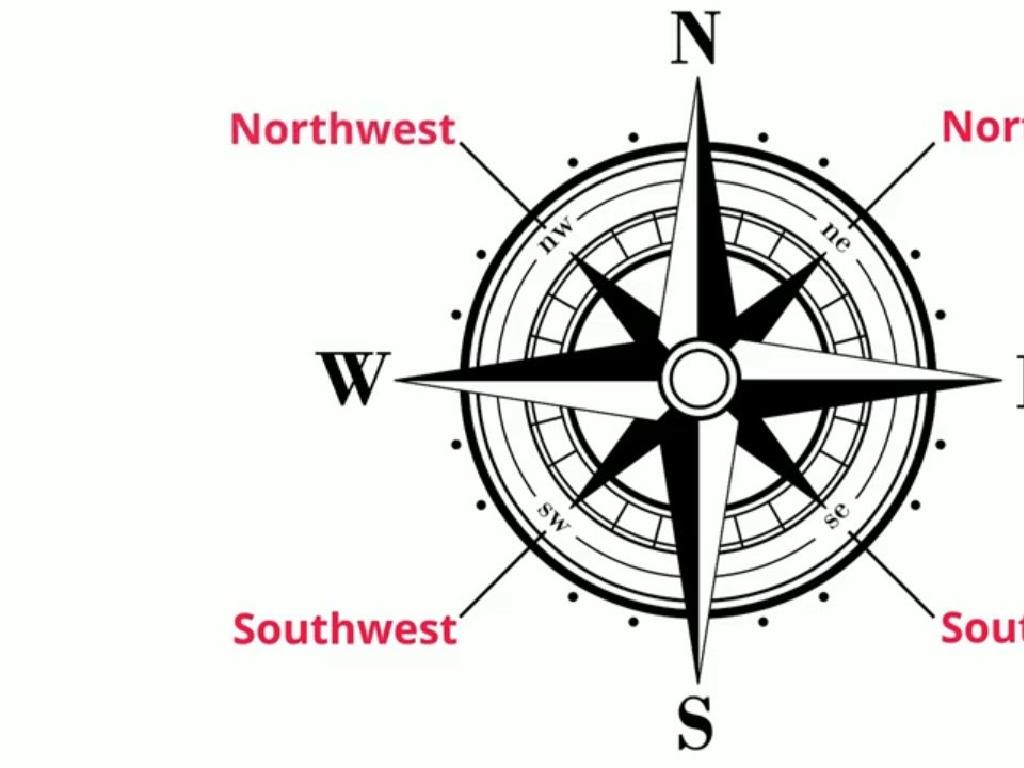Explore Energy Transformations: Bike Ride
Subject: Science
Grade: Eighth grade
Topic: Kinetic And Potential Energy
Please LOG IN to download the presentation. Access is available to registered users only.
View More Content
Introduction to Energy: Kinetic and Potential
– Energy defined: capacity to work
– Kinetic vs. Potential energy
– Kinetic: motion energy, Potential: stored energy
– Energy transformation in real life
– E.g., a roller coaster or charging a phone
– Exploring energy on a bike ride
– How pedaling a bike converts potential energy into kinetic energy
|
Begin the lesson by defining energy as the ability to do work, which is a fundamental concept in physics. Differentiate between kinetic energy (energy of motion) and potential energy (stored energy due to position). Provide real-life examples of energy transformations, such as a roller coaster gaining potential energy as it climbs and kinetic energy as it descends, or a phone using electrical energy (potential) and converting it to light and sound (kinetic). Then, focus on the example of riding a bike, where the rider’s pedaling transforms stored chemical energy in the body into kinetic energy, propelling the bike forward. This example will help students relate to the concept of energy transformation in a familiar context.
Understanding Kinetic Energy
– Kinetic Energy defined
– Energy of motion, possessed by moving objects
– Kinetic Energy formula
– KE = 1/2 mv^2, where m is mass, v is velocity
– Everyday examples of KE
– Rolling balls, flowing water, cycling
– Analyzing KE in motion
|
This slide introduces the concept of Kinetic Energy (KE) as a fundamental type of energy in motion. Begin with the definition, ensuring students understand that any object in motion has kinetic energy. Introduce the formula KE = 1/2 mv^2 and explain each variable. Use relatable examples like a ball rolling down a hill, water flowing in a stream, or the act of riding a bicycle to illustrate kinetic energy in action. Encourage students to think of other examples from their daily lives where they can observe kinetic energy. Discuss how the speed and mass of an object affect its kinetic energy, reinforcing the concept with practical observations or demonstrations.
Understanding Potential Energy
– Define Potential Energy
– Energy stored in an object due to its position or state
– Potential Energy formula
– PE = mgh, where m is mass, g is gravity, and h is height
– Everyday examples of PE
– Stretched spring, water in a dam, a book on a shelf
– Significance of PE in motion
|
Potential Energy (PE) is the energy an object has because of its position or state. It’s a fundamental concept in understanding energy transformations, especially in a bike ride scenario. The formula PE = mgh quantifies this energy, where ‘m’ stands for mass, ‘g’ for the acceleration due to gravity (9.8 m/s^2 on Earth), and ‘h’ for the height above the ground. In everyday life, we see potential energy in many forms, such as the energy stored in a stretched spring or the water held behind a dam. This energy becomes kinetic energy when the object starts moving. For example, as a cyclist pedals up a hill, they are increasing their potential energy, which is then converted to kinetic energy as they ride down the hill. Understanding this concept is crucial for students to grasp how energy is conserved and transformed in physical activities.
Energy Transformations During a Bike Ride
– Understanding energy transformation
– Energy transformation is the change of energy from one form to another.
– Energy changes in forms
– Potential energy becomes kinetic when you start pedaling.
– Real-world transformation examples
– A roller coaster: potential energy at the top, kinetic at the bottom.
– Exploring bike ride transformations
– On a bike, muscular (chemical) energy transforms into kinetic energy.
|
This slide introduces the concept of energy transformation, focusing on how energy can change from one form to another, such as potential to kinetic energy. Use relatable examples like a roller coaster to illustrate these concepts. Emphasize the energy transformations that occur during a bike ride, starting with the chemical energy in the rider’s muscles, which is converted into kinetic energy as they pedal. Discuss how potential energy is built up when going uphill and how it converts back to kinetic energy when going downhill. Encourage students to think of other examples where they can observe energy transformations in their daily lives.
Energy Transformations During a Bike Ride
– Kinetic and potential energy explained
– Kinetic energy is motion energy; potential energy is stored energy, like at the top of a hill.
– Energy changes: uphill vs downhill
– Riding uphill increases potential energy; downhill converts it back to kinetic.
– Rider’s effort and energy transformation
– The rider’s pedaling adds energy to the system, transforming into kinetic energy.
– Understanding energy conservation
|
This slide aims to explain the concepts of kinetic and potential energy within the context of a bike ride, a relatable activity for eighth graders. Begin by defining kinetic energy as the energy of motion and potential energy as energy that is stored due to position or shape. Discuss how riding uphill converts a rider’s kinetic energy into potential energy, which is then released as kinetic energy when going downhill. Emphasize the role of the rider’s effort in adding energy to the system, which is necessary to overcome gravity and friction. Conclude with the principle of energy conservation, explaining that the total energy in a closed system remains constant, merely transforming from one form to another.
Calculating Energy: Bike Ride
– Calculating Kinetic Energy (KE)
– KE = 1/2 mv^2, where m is mass, v is velocity
– Calculating Potential Energy (PE)
– PE = mgh, where m is mass, g is gravity, h is height
– Understanding energy transformation
– Energy changes from PE to KE as bike descends
– Practice problem: Bike energy
– Calculate KE and PE during different stages of a bike ride
|
This slide introduces students to the mathematical aspect of energy in motion and at rest. Kinetic Energy (KE) can be calculated using the formula KE = 1/2 mv^2, where ‘m’ represents the mass of the bike and rider, and ‘v’ is the velocity at which they’re traveling. Potential Energy (PE) is calculated with the formula PE = mgh, where ‘m’ is again the mass, ‘g’ is the acceleration due to gravity (9.8 m/s^2), and ‘h’ is the height of the hill. As a practical application, students will work through a problem calculating the KE and PE at different points during a bike ride, illustrating the transformation of energy from potential to kinetic as the bike moves downhill. This exercise will help solidify their understanding of energy dynamics in a real-world context.
Conservation of Energy: Biking Dynamics
– Understanding energy conservation
Energy cannot be created or destroyed, only transformed.
– Applying conservation to biking
While biking, kinetic energy transforms into potential energy and vice versa.
– Energy losses: friction & resistance
Friction from the ground and air resistance convert some energy into heat.
– Exploring real-world implications
|
This slide introduces the Law of Conservation of Energy and its application to the real-world scenario of riding a bike. Begin by explaining the law itself, emphasizing that in a closed system, energy is constant and only changes form. Then, relate this concept to a bicycle ride, where pedaling increases kinetic energy, which can be converted to potential energy when going uphill. Highlight that not all energy is perfectly conserved in usable forms; some is lost as heat due to friction with the ground and air resistance. Discuss the implications of these energy losses and how they affect the efficiency of biking. Encourage students to think about other examples of energy transformation and conservation in their daily lives.
Class Activity: Energy Transformation on a Bike
– Simulate energy transformations
– Observe kinetic & potential energy
– Watch the bike’s energy shift from potential at the top to kinetic as it descends
– Use toy bike & ramp setup
– A small-scale model will demonstrate the principles effectively
– Measure energy changes
– Use weights and tools to quantify energy transformations
|
This activity is designed to help students visualize and understand the concepts of kinetic and potential energy through a hands-on experiment. Students will use a toy bike and a ramp to simulate the energy transformations that occur during a bike ride. As the bike is placed at the top of the ramp, it possesses potential energy which is transformed into kinetic energy as the bike rolls down. By attaching weights to the bike, students can observe the effect of mass on energy transformation. Measuring tools like rulers or speedometers can be used to quantify changes in energy. Possible variations of the activity could include changing the height of the ramp, using bikes of different masses, or measuring the distance traveled by the bike at different ramp angles to explore the relationship between potential and kinetic energy further.
Energy Transformations: Recap & Observations
– Recap: Kinetic & Potential Energy
– Kinetic energy is motion energy, potential energy is stored energy.
– Daily life energy transformations
– Examples: Eating food (chemical to kinetic) or charging phones (electrical to chemical).
– Observe energy changes around you
– Look for energy shifts in nature, machines, and at home.
– Significance of energy concepts
|
This slide aims to summarize the key concepts of kinetic and potential energy and their transformations, which are fundamental in understanding physics. Emphasize the prevalence of these energy changes in everyday life and the importance of being aware of them. Encourage students to be curious and observant of the energy transformations that occur around them, such as a bird flying (potential to kinetic) or a roller coaster ride (kinetic to potential and back). This understanding deepens their appreciation of the physical world and the principles that govern it. As a class activity, students could keep an ‘energy diary’ where they note down different forms of energy they observe between classes.






